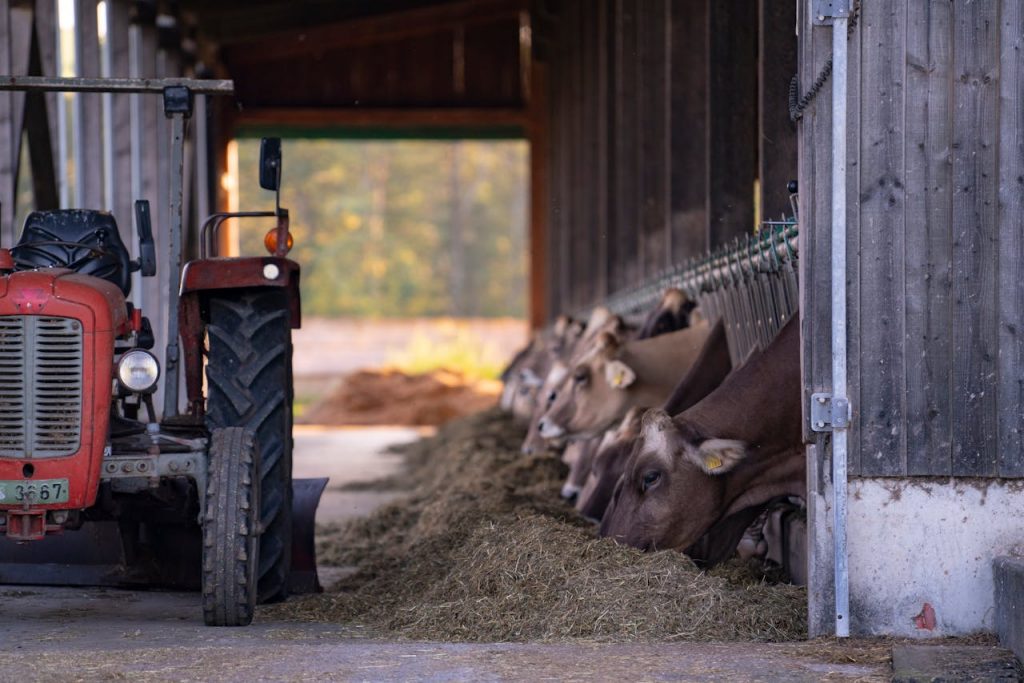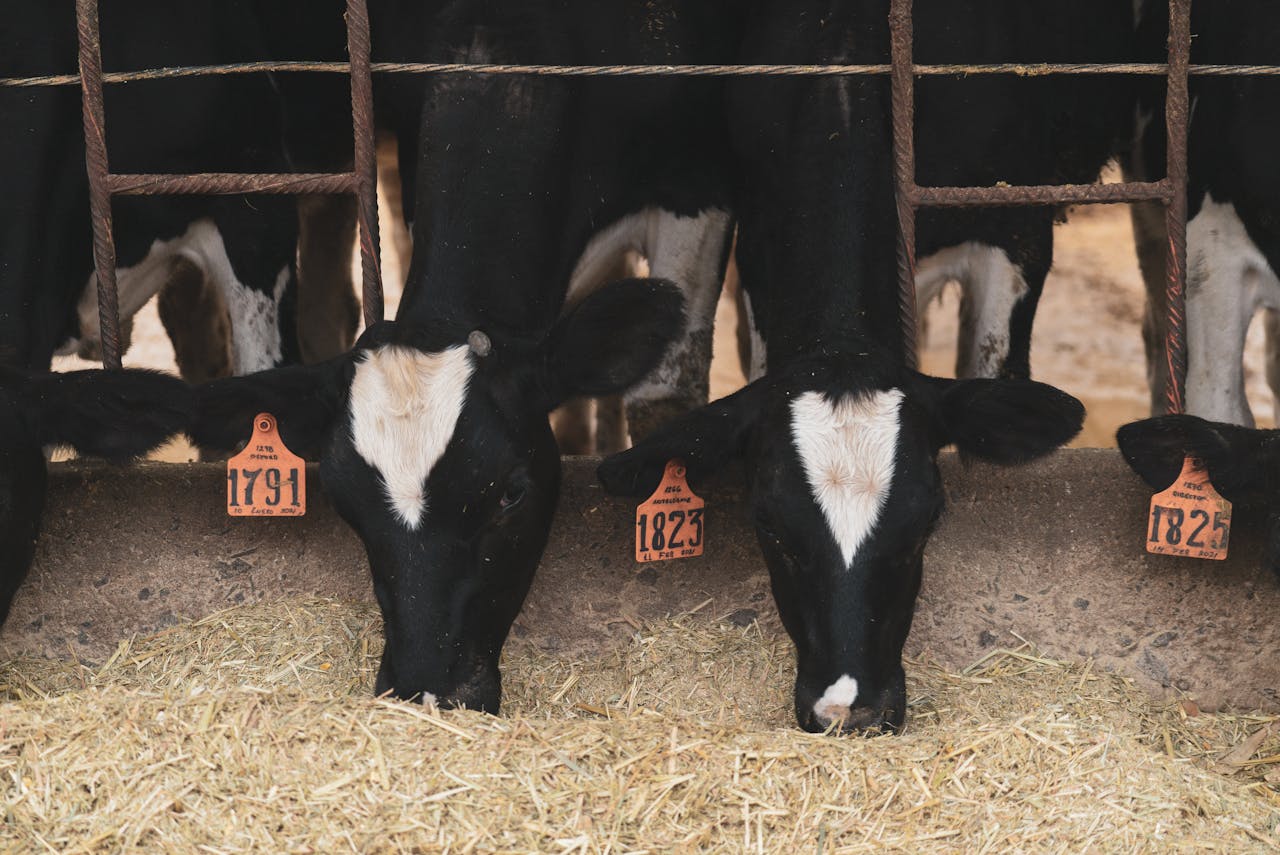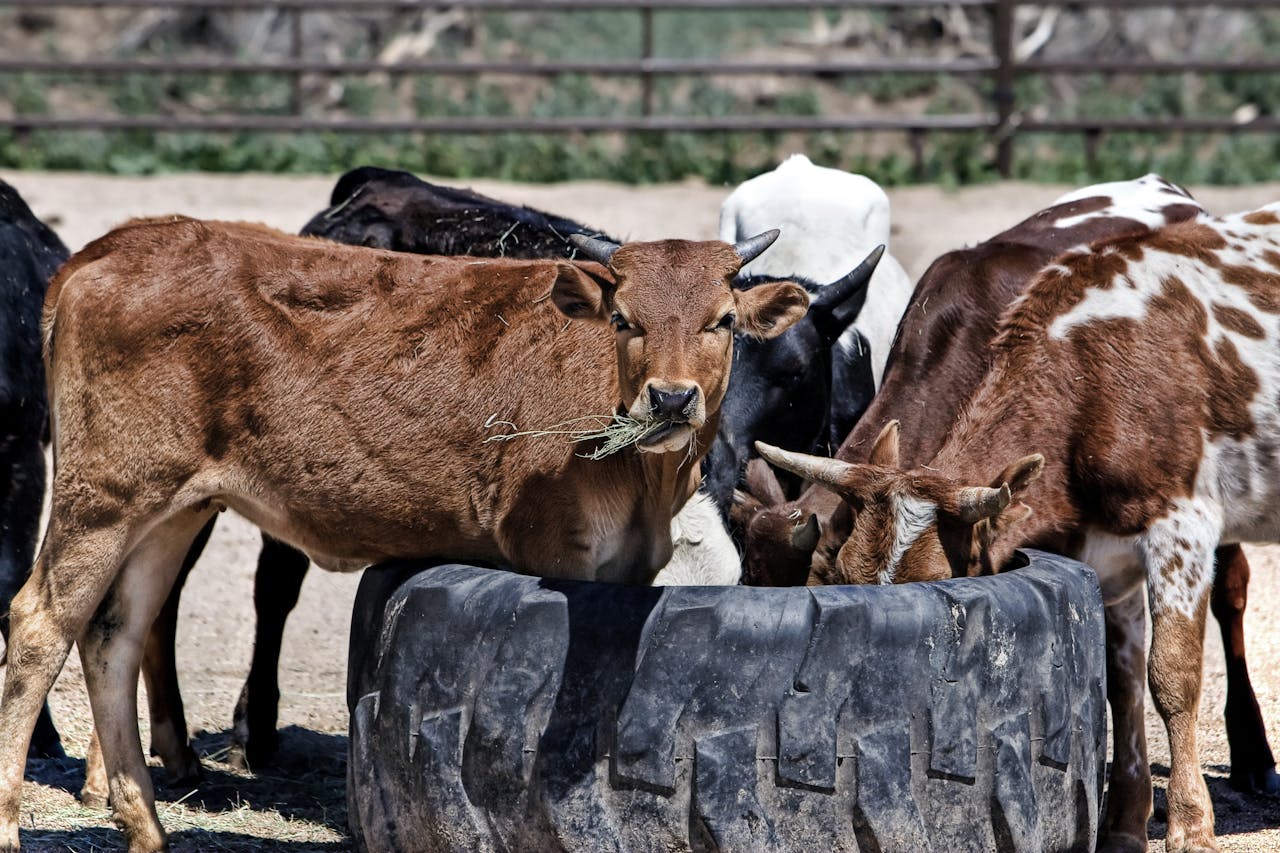Livestock farming is an essential part of global agriculture, providing food, livelihoods, and economic stability for millions. However, it is also one of the largest contributors to methane (CH₄) emissions, a greenhouse gas that is 25 times more potent than carbon dioxide (CO₂) in trapping heat over a 100-year period. As the demand for meat and dairy continues to rise, understanding livestock’s role in methane emissions and finding sustainable solutions has become crucial in the fight against climate change.
How Do Livestock Produce Methane?
Methane emissions from livestock primarily come from two sources:
- Enteric Fermentation
- Ruminant animals like cows, sheep, and goats digest food through a specialized process called enteric fermentation.
- Microorganisms in their stomachs break down fibrous plant material, producing methane as a byproduct, which is then released through burping (95%) and flatulence (5%).
- This process alone contributes to nearly 40% of global methane emissions from human activity.
- Manure Management
- When livestock manure decomposes in anaerobic (oxygen-free) conditions, such as in lagoons or storage pits, it generates methane.
- The intensive farming industry, which houses large numbers of animals in confined spaces, exacerbates this issue due to inefficient manure handling.
The Scale of Livestock Methane Emissions
- The global livestock sector accounts for approximately 14.5% of total human-induced greenhouse gas emissions, with methane making up a significant portion.
- Cattle alone are responsible for nearly 65% of livestock methane emissions, followed by buffaloes, sheep, and goats.
- Major livestock-producing countries like India, Brazil, the United States, and China are among the highest contributors to methane emissions from agriculture.
Environmental Impact of Livestock Methane
- Accelerating Climate Change
- Methane is a short-lived but highly potent greenhouse gas that traps more heat than CO₂, leading to rapid global warming.
- Reducing methane emissions can have an immediate cooling effect, helping slow climate change in the short term.
- Disrupting Weather Patterns
- Increased methane levels contribute to extreme weather events such as hurricanes, droughts, and heatwaves, which severely impact food production and water availability.
- Threatening Food Security
- Climate change caused by methane emissions leads to lower crop yields, loss of grazing lands, and reduced water supplies, affecting both farmers and consumers.
- Biodiversity Loss
- The demand for livestock farming results in deforestation and habitat destruction, endangering countless species and reducing the planet’s ability to absorb carbon dioxide.
Solutions to Reduce Livestock Methane Emissions
The livestock industry is a major emitter, but innovative solutions can significantly curb its methane footprint:
✅ Methane-Reducing Feed Additives – Supplements like AmritFeed, which incorporate probiotics, tannins, and plant-based compounds, help improve digestion and reduce methane production in cattle.
✅ Improved Manure Management – Converting manure into biogas through anaerobic digestion provides a renewable energy source while reducing methane emissions.
✅ Sustainable Grazing Practices – Rotational grazing and agroforestry systems enhance soil health and increase carbon sequestration, offsetting emissions.
✅ Selective Breeding and Genetics – Research is underway to breed low-methane-producing livestock, ensuring efficiency in meat and milk production.
✅ Reducing Overproduction & Consumption – Encouraging balanced diets, plant-based alternatives, and reducing food waste can lower the demand for livestock products and associated emissions.
Conclusion
Livestock farming plays a dual role in the global economy and climate crisis. While it is a vital industry, its contribution to methane emissions cannot be ignored. By adopting sustainable feeding solutions like AmritFeed, improving manure management, and promoting better grazing practices, we can create a future where livestock farming is both productive and environmentally responsible. The path to a greener, more sustainable planet starts with innovative solutions that balance agriculture with climate action.


